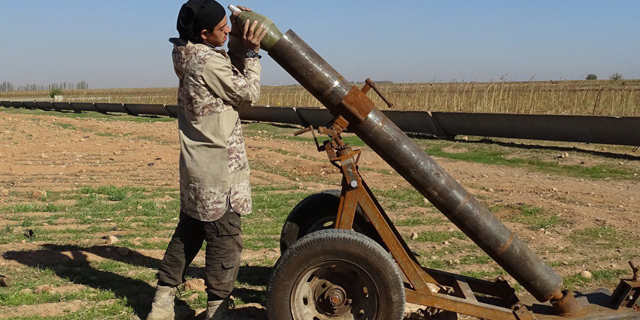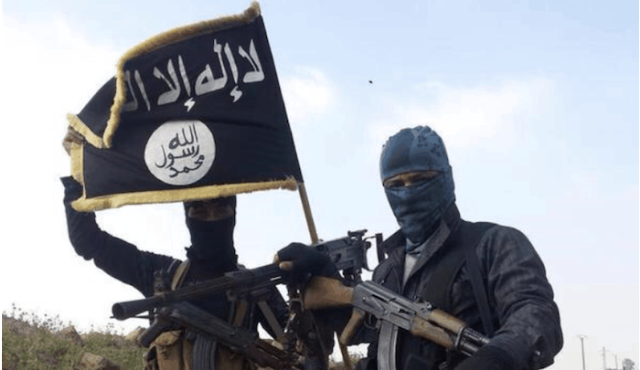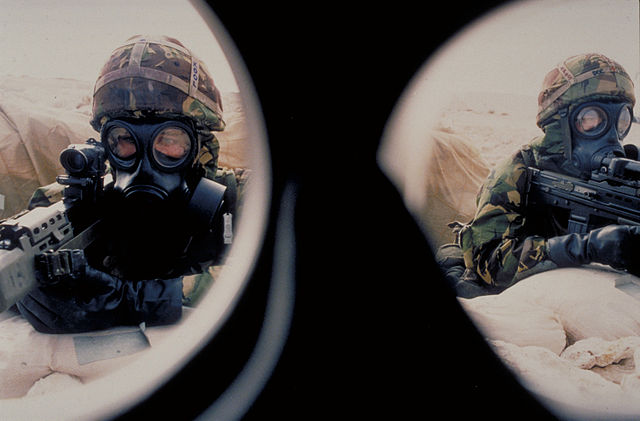Islamic State’s Rogue Use of Chemical Weapons – a Clear and Present Danger
Dr. Jill Bellamy, noted bio defense expert and member of the UN Counterterrorism Task Force, has warned repeatedly about the Islamic State of Iraq and the Levant (ISIL) development and test of CBRN weapons in Syria, Iraq and potentially in Europe. She has also drawn attention to vast resources of the Islamic State to create Chemical and Biological weapons laboratories and scientific figures from the regime of late Iraqi dictator Saddam Hussein. In several Lisa Benson Show programs she has drawn attention to the likelihood of use of CBRN weapons in the EU, given revelations following the Brussels airport and subway bombings, about the Brussels ISIL terrorist cell attempts to kidnap Belgian nuclear research experts and obtain radio isotopes for creation of dirty bomb terror weapons. Note this from a January 2016 New English Review interview article with Dr. Bellamy:
In conversations with Dr. Bellamy she had raised the threat that the Islamic State with more than $1 billion in funding from smuggled oil sales, extortion and looted bank hard currency and gold reserves could acquire the professional staff of scientists and technicians and equip laboratories for production of leading edge synthetic biological weapons. She had also drawn concern over foreign ISIS fighters in Libya gaining control of Gaddafi-era chemical weapons caches sealed by the UN.
Bellamy’s response on chemical weapons threat of ISIL:
We have seen IS’ capability of using chemical weapons. On several occasions, they have used mustard agents. They have also used sarin. This has been confirmed by the UN. We have a situation where they have already been using it in the Caliphate. The potential that they could bring this into Europe is extremely high. This is very easy using the refugee routes. Thus chemical weapons use in [Europe] could result in mass casualties.
To illustrate Dr. Bellamy’s prescient concerns, one can read into a U.K. Telegraph article published, May 22, 2016 on the redeployment of ISIL Chemical weapons laboratories and former Saddam Hussein experts to residential areas in preparation for the potential battle by Iraqi Forces to retake Mosul. Note these excerpts:
ISIL has moved its chemical weapons operation to densely populated residential areas and is testing homemade chlorine and mustard gas on its prisoners, residents of the Iraqi city of Mosul have claimed.
ISIL is reported to have set up laboratories in built-up neighborhoods in the heart of its so-called caliphate to avoid being targeted by coalition air strikes.
The terror group is known to harbor chemical and nuclear ambitions, and is trying to manufacture weapons not only for attacks within Iraq and Syria but also the West.
It has a special unit for chemical weapons research made up of Iraqi scientists who worked on weapons programs under Saddam Hussein, as well as foreign experts.
The head of the unit, Sleiman Daoud al-Afari, was captured during a raid by US Special Forces outside Mosul in March and is now sharing intelligence on ISIL’s chemical weapons operation.
An investigation by Syrian and Iraqi citizen journalists who report under the name Sound and Picture reveal he has now been replaced by Abu Shaima, an Iraqi doctor who worked at the University of Baghdad during Saddam’s reign.
Other than his links to the late Iraqi dictator little is known about Shaima, which is customary for top ISIL leaders.
The evidence of ISIL CW testing in Mosul residential areas:
Residents of al-Mohandseen – which had been a wealthy Christian neighborhood until ISIL seized the city – said several houses had been taken over by ISIL officials in the last few weeks. A number of large unmarked trucks have been parked outside and more recently they reported seeing dozens of dead dogs and rabbits in nearby rubbish containers.
An ISIL insider confirmed to the journalists, who shared the information with the Telegraph, that they had been dumped there after they were used for chemical testing.
The report also claimed ISIL has been carrying out experiments on prisoners they are holding at a secret jail in al-Andalus, in the Nineveh governorate of Mosul, exposing them to chlorine and mustard gas to test the toxicity.
Residents near the prison have reported breathing difficulties and children developing severe rashes – some of the side effects of exposure to such substances.
The stockpiles and indiscriminate use of CW by ISIL:
The extremists have seized large quantities of industrial chlorine and are believed to have the expertise to make mustard gas. They are also feared to have captured chemical weapon stocks from Bashar al-Assad’s regime across the border in Syria.
The militant group has already used chemical weapons against Kurdish Peshmerga forces in northern Iraq and Syria.
In March, a suspected ISIL chemical attack on the Iraqi town of Taza, south of Kirkuk, killed three children and wounded some 1,500 people, with injuries ranging from burns to rashes and respiratory problems.
Brig Roger Noble, the deputy commander of international troops training and supporting the Iraqi army, told the Telegraph that ISIL militants are expected to use chemical weapons against troops trying to retake Mosul, Iraq’s second city.
Witness this warning from a former UK military expert on CBRN about this ISIS CW threat:
Hamish de Bretton-Gordon, former commanding officer of the UK Chemical, Biological, Radiological and Nuclear Regiment (CBRN) and chemical weapons adviser to NGOs in Syria and Iraq, told The Telegraph:
“ISIL’s chemical weapons operation has been heavily targeted – as is detailed in this report – and moving into residential areas is exactly what you would expect them to do now.”
He said Western security services should be concerned that their chemical operations have effectively gone underground, allowing them to continue their work outside of strike range.
“Now we know the extent of the ISIL chemical and dirty bomb aspirations we must make doubly sure that our security in the UK is absolutely water-tight against this threat.”
This warning about ISIL’s rogue use of CW confirms Dr. Bellamy’s prescient warning that defense against such threats to our troops and civilians there and in the West should be cause to make them “water tight”. Unfortunately, ISIL is not bound to international conventions in the banning and use of Chemical Weapons, as evidenced by mass casualties in both Iraq and Syria. The laboratories, personnel that produce them and the stockpiles must be captured and destroyed. The track record in alleged use of Sarin gas on civilians in Syria and intervention of the Office for the Prohibition of Chemical Weapons suggests that these defenses are far from “water tight”.
EDITORS NOTE: This column originally appeared in The Nat Sec Daily Brief.



 RECOMMENDED READING
RECOMMENDED READING





















